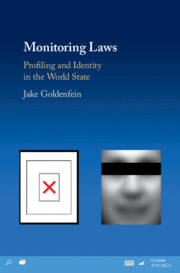Refine search
Actions for selected content:
48287 results in Computer Science
ROB volume 37 issue 12 Cover and Front matter
-
- Article
-
- You have access
- Export citation
Special Issue on Wearable Robotics: Dynamics, Control and Applications
-
- Article
-
- You have access
- Export citation
ROB volume 37 issue 12 Cover and Back matter
-
- Article
-
- You have access
- Export citation
Two-level Q-learning: learning from conflict demonstrations
- Part of
-
- Journal:
- The Knowledge Engineering Review / Volume 34 / 2019
- Published online by Cambridge University Press:
- 12 November 2019, e14
-
- Article
- Export citation
Action learning and grounding in simulated human–robot interactions
- Part of
-
- Journal:
- The Knowledge Engineering Review / Volume 34 / 2019
- Published online by Cambridge University Press:
- 12 November 2019, e13
-
- Article
- Export citation
Accretion theory of ideation: evaluation regimes for ideation stages
- Part of
-
- Journal:
- Design Science / Volume 5 / 2019
- Published online by Cambridge University Press:
- 11 November 2019, e23
-
- Article
-
- You have access
- Open access
- HTML
- Export citation
Can the choice of eco-design principles affect products’ success?
-
- Journal:
- Design Science / Volume 5 / 2019
- Published online by Cambridge University Press:
- 11 November 2019, e25
-
- Article
-
- You have access
- Open access
- HTML
- Export citation
Strategic risk dominance in collective systems design
-
- Journal:
- Design Science / Volume 5 / 2019
- Published online by Cambridge University Press:
- 11 November 2019, e24
-
- Article
-
- You have access
- Open access
- HTML
- Export citation
Noncommutative network models
-
- Journal:
- Mathematical Structures in Computer Science / Volume 30 / Issue 1 / January 2020
- Published online by Cambridge University Press:
- 11 November 2019, pp. 14-32
-
- Article
-
- You have access
- Open access
- Export citation
Keyword extraction: Issues and methods
-
- Journal:
- Natural Language Engineering / Volume 26 / Issue 3 / May 2020
- Published online by Cambridge University Press:
- 11 November 2019, pp. 259-291
-
- Article
- Export citation
Extensions of unification modulo ACUI
-
- Journal:
- Mathematical Structures in Computer Science / Volume 30 / Issue 6 / June 2020
- Published online by Cambridge University Press:
- 11 November 2019, pp. 597-626
-
- Article
-
- You have access
- Open access
- Export citation

Monitoring Laws
- Profiling and Identity in the World State
-
- Published online:
- 08 November 2019
- Print publication:
- 24 October 2019
Deep Learning in Natural Language Processing, edited by Li Deng and Yang Liu. Singapore: Springer, 2018. ISBN 9789811052088. XVII + 329 pages
-
- Journal:
- Natural Language Engineering / Volume 27 / Issue 3 / May 2021
- Published online by Cambridge University Press:
- 08 November 2019, pp. 373-375
-
- Article
- Export citation
17 - Ethical Issues Facing Engineers in Oil and Gas Operations
- from Part III - Engineering
-
-
- Book:
- Next-Generation Ethics
- Published online:
- 18 October 2019
- Print publication:
- 07 November 2019, pp 245-257
-
- Chapter
- Export citation
13 - Transparency: The What, Why, and How of Organizational Effectiveness and Ethics
- from Part II - Business Enterprises
-
-
- Book:
- Next-Generation Ethics
- Published online:
- 18 October 2019
- Print publication:
- 07 November 2019, pp 182-193
-
- Chapter
- Export citation
20 - Case Studies of Product Life Cycle Environmental Impacts for Teaching Engineering Ethics
- from Part III - Engineering
-
-
- Book:
- Next-Generation Ethics
- Published online:
- 18 October 2019
- Print publication:
- 07 November 2019, pp 291-312
-
- Chapter
- Export citation
11 - How Management Theories and Culture Fads Kill Organizational Ethics
- from Part II - Business Enterprises
-
-
- Book:
- Next-Generation Ethics
- Published online:
- 18 October 2019
- Print publication:
- 07 November 2019, pp 143-157
-
- Chapter
- Export citation
3 - Composite Ethical Frameworks for the Internet of Things and Other Emerging Technologies
- from Part I - Technology
-
-
- Book:
- Next-Generation Ethics
- Published online:
- 18 October 2019
- Print publication:
- 07 November 2019, pp 19-38
-
- Chapter
- Export citation
6 - A Hippocratic Oath for Technologists
- from Part I - Technology
-
-
- Book:
- Next-Generation Ethics
- Published online:
- 18 October 2019
- Print publication:
- 07 November 2019, pp 71-80
-
- Chapter
- Export citation
